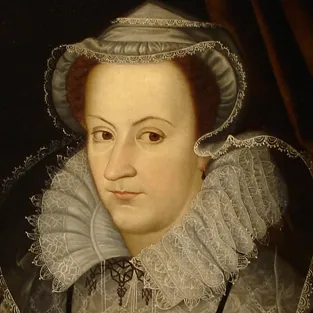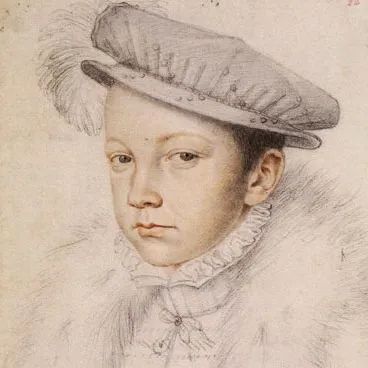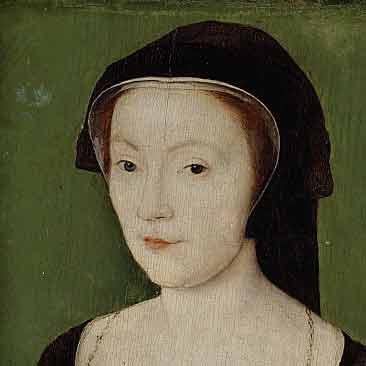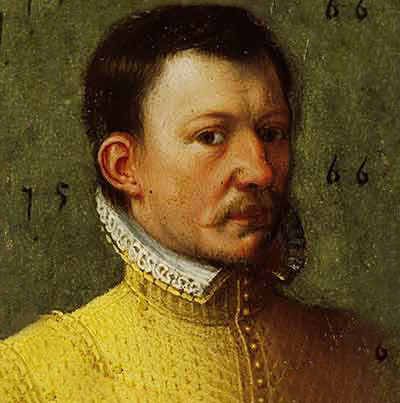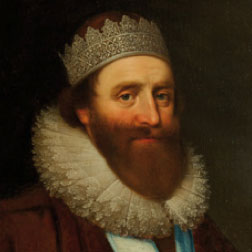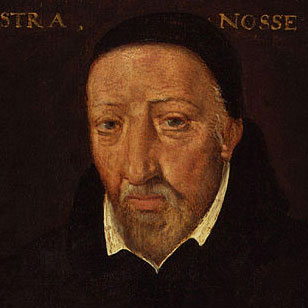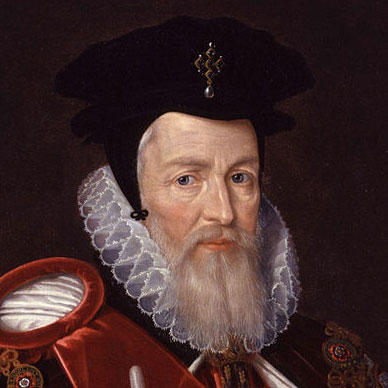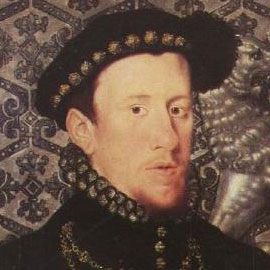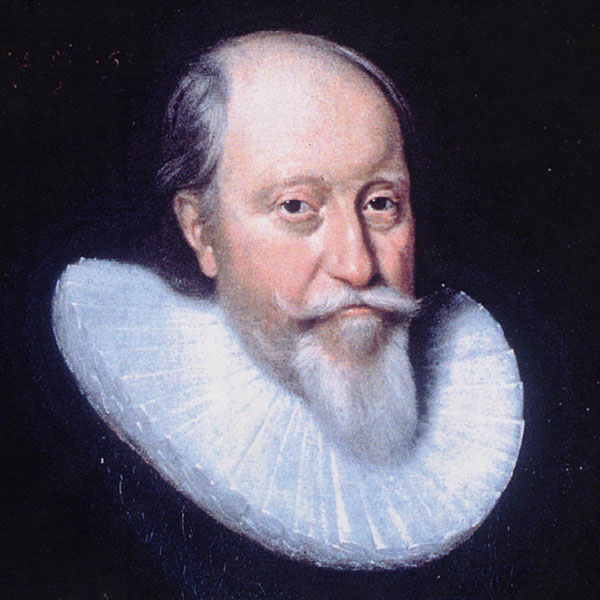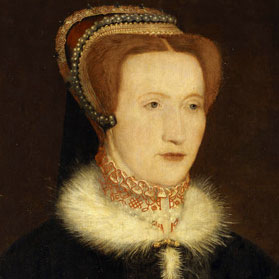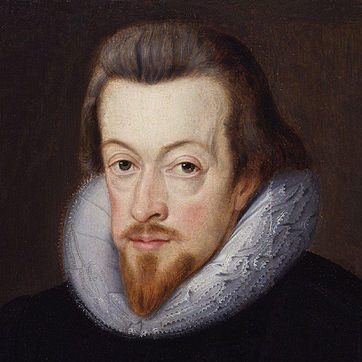Note: This biography focusses on Elizabeth’s attitude to Scotland and both Mary Queen of Scots and James VI.
Elizabeth was the daughter of Henry VIII by Anne Boleyn, born at Greenwich on 7 March 1533. When her mother was executed in 1536, she was declared illegitimate, but was named in the order of succession in Henry VIII’s will. When it became clear that her half-brother, Edward VI, was dying of consumption, Protector Northumberland produced an instrument, which Edward signed, nominating the Protestant Lady Jane Grey, grand-daughter of Henry VIII’s younger sister, Princess Mary, as his successor. This bypassed Henry’s daughters Mary and Elizabeth, who were up in arms. They marched on London, and Mary was installed as Mary I. When she died in 1558, Elizabeth immediately became Queen, even though in Catholic eyes she was illegitimate (as Anne Boleyn’s marriage to Henry was not recognised by Catholic Church).
The Instrument which had nominated Lady Jane Grey had also bypassed the descendants of Princess Margaret, Henry VIII’s elder sister. In dynastic order of succession, these were Mary Queen of Scots, Lady Margaret Douglas and her son Henry Stuart, Lord Darnley, who were all staunchly Catholic. Having been born outside England, Mary Queen of Scots was debarred under Henry VIII’s will. Lady Margaret was also debarred, as she had been deemed illegitimate by Henry VIII on the slightly doubtful grounds that he had not approved of her parents’ marriage as required by the Royal Marriage Act of 1536 (notwithstanding that she was born twenty-one years before it was enacted).
Mary had no appeal for the English Government as she was about to become Queen Consort of France. Matters were made more complicated for her, when the French claimed that she was rightfully the English Queen and quartered her arms with those of England. It was only France’s exhaustion from war, which prevented the French Crown from taking action to install Mary as the Catholic Queen of England, thus subsuming England under France. This would have upset the balance of power in Europe and would have been strongly resisted not only by the Protestant English but by the Spanish.
In 1560, Mary Queen of Scots’ mother, Marie of Guise, the Queen Regent, died in Scotland and Reformers now dominated Scottish Government. This was followed by the death of Mary’s sickly husband, Francis II of France. Mary had little choice but to return to Scotland. The Scottish Presbyterians approached the English Government with a plan to make Lord James Stewart, Mary’s illegitimate (but Protestant) half-brother, the Scottish King. Elizabeth would not countenance the deposition of an anointed monarch, but wanted Mary to confirm her as the rightful English Queen. Mary would have agreed to this, but was being asked to ratify the Treaty of Edinburgh, which also debarred her from the English succession.
William Cecil, Elizabeth’s Secretary of State, and Lord James worked out a plan to separate Mary from her belligerent French relations and to return her to the Scottish Crown. They agreed to her holding Catholic services in private so long as Scotland remained Presbyterian. Lord James, who soon became Earl of Moray, hoped that the English would then recognise Mary as Elizabeth’s heir. On Mary’s return, Elizabeth stalled; she was nervous that by nominating her as her successor, she would make Mary the focus for all future Catholic plots to take her throne. Cecil took a harder line; in no circumstances would he accept another Catholic on the English throne after the experience of ‘Bloody’ Mary I, but he would certainly string her along to assure her loyalty.
Although William Maitland of Lethington, Mary’s Secretary of State, negotiated assiduously on Mary’s behalf, he was unable to persuade, either Elizabeth or Cecil to recognise Mary as Elizabeth’s heir. Mary tried the tack of looking for a husband who the English would find acceptable and who would promote her claim. Cecil made clear that he should be ‘some fit nobleman within the island’, who should live in Scotland after the marriage. When Elizabeth was pressed to name a suitable candidate, she proposed her long-time favourite, Lord Robert Dudley, and raised him to the Earldom of Leicester to improve his status. Yet he was unenthusiastic and still hoped to marry Elizabeth. Lady Margaret Douglas promoted her son, Henry Stuart, Lord Darnley.
Elizabeth was nervous about linking Mary with a rival candidate for the English succession, but she had cold feet about losing Leicester. She asked Mary to restore the estates of Darnley’s father, the Earl of Lennox, who had been exiled by the Scots for having supported the English. When he arrived back in Scotland, Mary agreed to restore him and asked Lady Margaret to apply for a passport for Darnley to join him. Elizabeth agreed to the visit, perhaps because she believed that she could prevent the marriage by holding Lady Margaret under house arrest and by threatening the attainder of the Lennoxes’ English estates. Perhaps surprisingly, Cecil was also persuaded to agree to Darnley’s visit. Darnley was already showing every sign of being an objectionable prig and a political lightweight. Cecil may have thought that Mary would never take him seriously, but more likely he believed that once married, Elizabeth would realise their shortcomings and veto their succession to the English throne. Yet everyone forgot that their marriage would place Moray, upon whom the English alliance with Scotland depended, in acute political danger.
Although Cecil backed Moray to rebel, Moray lacked support and was forced to escape to England, from where Elizabeth had to use all her diplomatic influence to have him restored. Despite making threats in an effort to prevent the marriage, Elizabeth was not involved in any of Cecil’s later scheming to bring the couple down, which resulted in Darnley being murdered with his approval, and Mary being imprisoned at Lochleven. This resulted in her enforced abdication in favour of a Regency for her son, James, led by Moray. No doubt to placate the foreign ambassadors, Elizabeth wrote letters of support to Mary at Lochleven. Although Mary escaped, her rapidly gathered forces were defeated at the Battle of Langside, and Mary she turned to Elizabeth, her ‘sister Queen’, for assistance.
Once in England, there had to be an investigation into Darnley’s murder, but Elizabeth wanted an outcome that left Mary securely under house arrest in England, without the imputation of murder which would preclude her future succession. Although Cecil achieved this, Elizabeth now faced a series of Catholic plots to place Mary on the English throne. Elizabeth was not prepared to accuse Mary of treason unless there was clear evidence that she was implicated in any of the plots. When various Catholic Earls in Northern England rebelled to back the Duke of Norfolk to marry Mary to support her claim to the English throne, there was no groundswell of support and Norfolk was executed, but Elizabeth protected Mary, whose involvement could not be confirmed.
Both Cecil and his successor as Secretary of State, Sir Francis Walsingham, were determined to find evidence implicating her. Mary’s supporters were infiltrated with double agents, who reported on all her correspondence. Eventually Mary was caught when her coded letters were deciphered, revealing her support for a plot led by Sir Anthony Babington to assassinate Elizabeth. Mary was found guilty at a trial at Fotheringhay Castle, and Elizabeth reluctantly signed her death warrant.
Elizabeth now focused on shaping Mary’s son, James VI, as her heir, but, as with Mary, was not prepared to recognise his position despite his Presbyterian upbringing. English troops were sent to mop up pockets of resistance by Mary’s supporters, who had arranged the assassination of both Moray and Lennox while Regent. Yet her Protestant allies in Scotland were pushed to one side by the young James, who fell under the thrall of both Esmé Stuart, later Duke of Lennox, and Captain James Stewart, later Earl of Arran. Although the Protestants kidnapped James and forced Esmé into exile, Arran managed to rescue him and force the Protestant Lords to flee into England.
After one failed attempt, the Protestant Lords returned to Scotland and regained control with English support. James was now faced with a dogmatically Presbyterian Government supported by the Kirk. James’s marriage to Anne of Denmark met with Elizabeth’s approval and by choosing a Lutheran Royal princess, he enhanced his claim to succeed her. Yet he was struggling to exert his authority over both Government and the Kirk. Despite his assured Protestantism, he offered clandestine support to a group of Catholic Earls in northern Scotland, who were negotiating with Spain to launch a Counter-Reformation. A part of his motive was to make himself acceptable to the Catholic hierarchy in Europe as a future English King. Elizabeth was furious and secretly backed the maverick Francis Stewart-Hepburn, 5th Earl of Bothwell against him. Bothwell, who was known as the Wizard Earl, kept popping up in unexpected places, and had just enough English support to threaten James’s limited forces. When James was at last brought back into line, the English dumped Bothwell, who was forced into exile in Italy.
When William Cecil died in 1598, Elizabeth had lost her mentor. His son, Robert had progressively taken up the reins of Government, but found her lack of decision taking exasperating. James did not know where he stood with Robert, and contemplated supporting the Earl of Essex, who led a rebellion in an attempt to force him out of Government. This was quickly put down, without James’s planned support being revealed. Robert warned James not to interfere in English politics, but told him that, although Elizabeth would never recognise him, he was the common sense choice as her heir. When Elizabeth died at Richmond Palace on 24 March 1603, James was welcomed with open arms as English King by Robert Cecil and his English Government colleagues.


